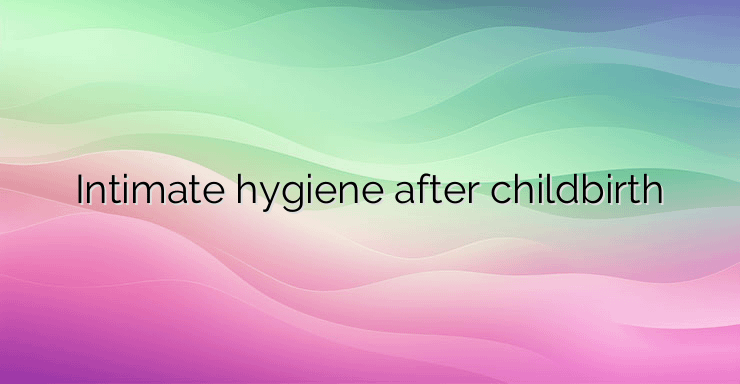Intimate hygiene after vaginal birth is of great importance for the mother’s quick and optimal recovery. Maintaining good hygiene is important not only for reducing pain and discomfort, but also for wound healing and infection prevention. The hygiene of the soft tissues in the small pelvis – the perineum – is of great importance for a quick recovery. Many specialists recommend the use of a perineal bottle, with which the woman washes herself after each urination. This can reduce the burning sensation and pain. It also lowers the risk of infections. After using the perineal bottle, careful blotting with toilet paper is recommended. It is important to avoid rubbing and applying strong pressure, as this can cause additional soreness and cause further inflammation. Soaking in a tub filled with water at the appropriate temperature could also help relieve discomfort and stimulate the healing process. In this case, however, thorough cleaning of the tub before submerging in it is of utmost importance. If the surface of the bathtub is not properly cleaned, a prerequisite for infections can be created. Up to several weeks after a vaginal birth, vaginal discharge is observed. The body sheds the blood and mucus that has accumulated in the uterus. This discharge is called lochia and lasts about 4-6 weeks. Its amount may vary. During the first 2-3 days, the lochia has a dark red color and consists of blood and small clots. From day 3-10, the liquid is pink or light brown. After about 2 weeks, the discharge is yellowish-white and can be observed for another two to eight weeks. It is recommended to use sanitary napkins rather than tampons to absorb lochia. During the first 6 weeks after birth, the use of tampons should be avoided, as they can cause infection. It is recommended to change the sanitary napkin after each bowel movement and discharge – at least 4 times a day. Whenever using the bathroom or changing a dressing, hands should be washed thoroughly before and after. In this way, the risk of infections is significantly reduced. In some cases, an episiotomy is necessary during a natural birth. After it, intimate hygiene is especially important. When washing the perineal area, the water should not be too warm, as this can stimulate the sutures to break down more quickly. Different ointments or sprays can be used to relieve pain, on the recommendation of a specialist doctor. The area where the incision was made should be kept clean and dry. After washing, dry gently. Usually, as a result of the healing processes, itching may occur. In these cases, it is important not to comb the area. For women who develop hemorrhoids after childbirth, hygiene is of great importance. Therefore, after carefully cleaning the perineal area, proceed to cleaning the anus and rectum.The pain in these cases can be relieved by taking medication. Important in the presence of hemorrhoids is the prevention of constipation. This can be achieved by consuming enough fiber and fluids. References: https://www.unitypoint.org/news-and-articles/postpartum-vaginal-care-hygiene-tips-for-after-giving-birth https://eu.babymori.com/blogs/lifestyle/feminine -care-after-birth


Leave a Reply